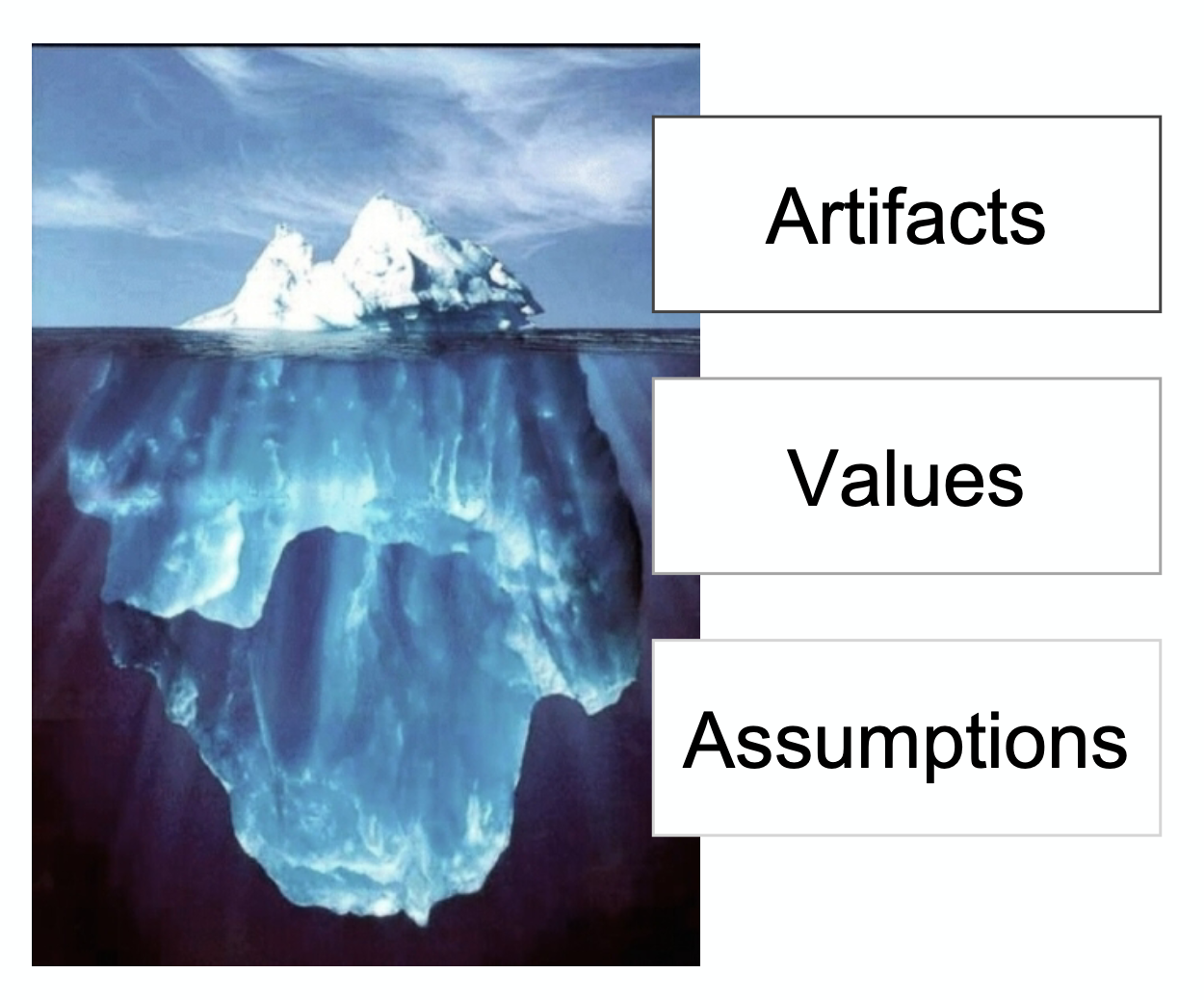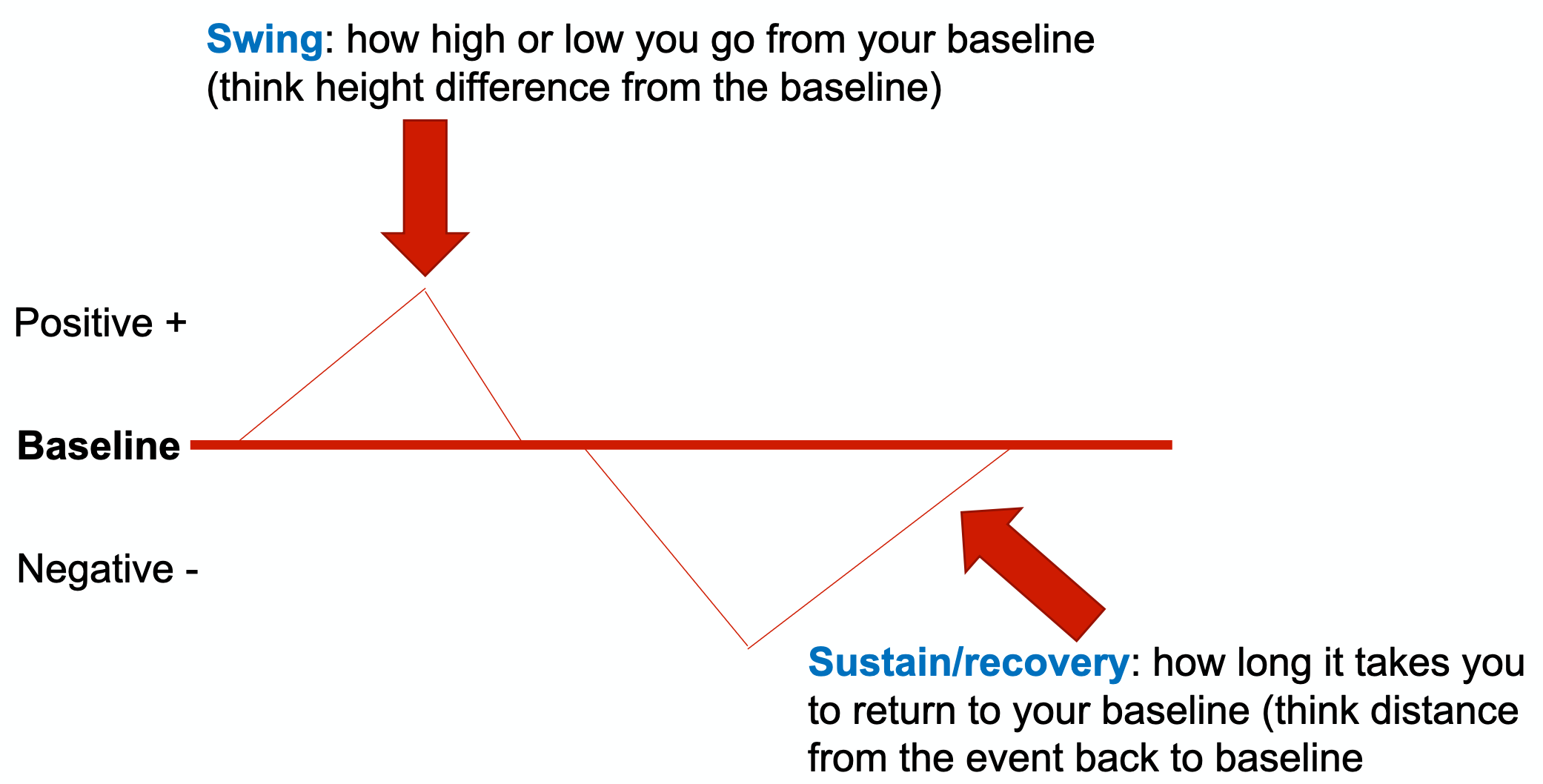Management Test 4
0.0(0)
0.0(0)
New
Card Sorting
1/32
Earn XP
Description and Tags
Study Analytics
Name | Mastery | Learn | Test | Matching | Spaced |
|---|
No study sessions yet.
33 Terms
1
New cards
Zappos
encourage creative and weirdness in people and office space. Says self management will save Zappos from the fate of most large companies
2
New cards
Holacracy
self-organizing teams rather than being in a management hierarchy. Circle of different departments. NO BOSS
3
New cards
Schein’s 3 levels of culture
90% is invisible to the seeing eye

4
New cards
Artifacts
What We See: Visible, tangible manifestations of culture
5
New cards
Examples of Artifacts
dress, organizational chart, logos, physical layout, behavior, awards
6
New cards
Values
What they say: Less visible, but can be talked about and surfaced relatively easily.
7
New cards
Value examples
norms, company philosophies, stories/legacies, mission statements.
8
New cards
Assumptions
What we deeply believe and act on: Learned responses that have worked repeatedly and reliably.
9
New cards
Assumption Examples
very company specific. For the U, perhaps the value of education is a deeply held belief?
10
New cards
Toxic Culture
where the workplace is plagued by fighting, drama and unhappy employees to the point that productivity and the well-being of the people in the office is affected.
11
New cards
Toxic Signs
* Low morale at work
* Lack of communication
* Employees are afraid of the boss
* High employee turnover
* There are cliques and groups in the office
* People in middle management are just “figure heads”
* Lack of communication
* Employees are afraid of the boss
* High employee turnover
* There are cliques and groups in the office
* People in middle management are just “figure heads”
12
New cards
How do you know if your work is toxic?
If have 4 signs then you can say environment is toxic
13
New cards
How does it gain traction?
1. Toxic behavior happens
2. repetition makes it feel normal
3. Team stops trusting management to act
4. People feel that extreme action is justified
14
New cards
How do firms normally try to change their organization’s culture?
Many firms (mistakenly) focus on changing artifacts, because they are easy to observe and easy to change.
15
New cards
“Burning platform” (Assumptions)
Novel/sudden situation necessitates change. Organization's established responses fail repeatedly, leading to crisis.
16
New cards
Through careful leadership. (Values)
Effectively articulating values. Often starts with mission statement and acting on those values
17
New cards
Video: Riding the Waves of Culture
* dilemmas make us human but our culture dictates how we make decisions
* Integrity is different in every culture
* “A different point of view is simply from the place you are not”
* Integrity is different in every culture
* “A different point of view is simply from the place you are not”
18
New cards
5 Self-destructive behaviors
Fear of being criticized leads us to practice destructive behavior
19
New cards
Procrastination
we are uncomfortable starting or don't know where to start, on average does have element of anger or hostility
20
New cards
Denial
unconscious process, when we are unwilling or choose not to face reality
21
New cards
Brooding
preoccupied with particular feedback or unjustly evaluated
22
New cards
Jealousy
normal to compare yourself to others, problem when its based on envy, possessiveness, or over idolize someone
23
New cards
Self-sabotage
unconscious behavior, get in your own way
24
New cards
Adaptive Techniques
* Recognize your emotions and responses
* Get Support
* Reframe the feedback
* Use incentives
* Get Support
* Reframe the feedback
* Use incentives
25
New cards
Proactive Feedback Process (at work)
4 steps
26
New cards
Self-assessment
take a bite of the humble pie, be honest
27
New cards
External feedback
Go to people that you trust first (dress rehearsal) then go to your boss
28
New cards
Absorbing the feedback
let it sit in and stew over it
29
New cards
Taking action toward change
creating an action plan
30
New cards
Video: How to use feedback to learn & grow
There are two parties when feedback is given: the giver & the receiver
31
New cards
Which party is in charge when receiving feedback?
The Receiver because they have to decide to listen and change
32
New cards
What are the triggered emotional responses to feedback?
1. Truth: How accurate is the feedback?
2. Relationship: Who is giving the feedback?
3. Identity: How does this make me look as a person?
33
New cards
Sensitivity to feedback
How far an individual swings after receiving feedback and how long it takes to recover
